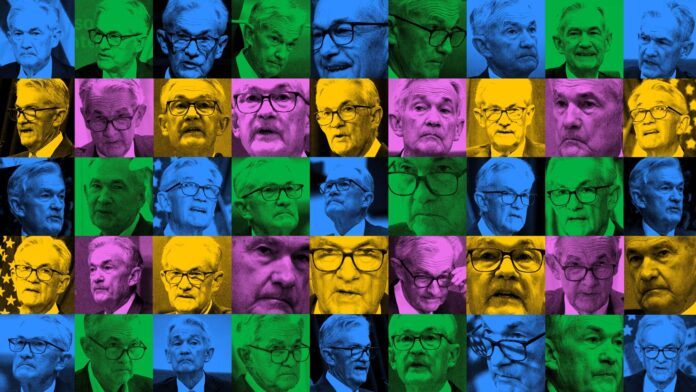Fed Chair Jerome Powell’s dovish December pivot saved the US from recession. Now, getting inflation back under control requires a hawkish reversal.
Bloomberg — Words are powerful. For the US economy, no-one’s more so than those of Fed Chair Jerome Powell.
Bloomberg Economics’ Fed sentiment index — powered by a natural language processing algorithm based on more than 60,000 Fed headlines — shows that in December, Powell delivered a major pivot. By hinting at a swifter shift toward rate cuts, he gave markets a boost and helped the economy dodge a downturn.
So far, so good — but there’s a catch. Four months on, with demand powering ahead and inflation stuck above target, Powell has been forced into a reversal. That started on the margins of the International Monetary Fund’s April meetings, when he said “it is appropriate to allow restrictive policy further time to work” — pushing the prospect of rate cuts further into the distance.
That was a move in the right direction. But our index shows it only undid a fraction of the stimulus unleased by his December pivot. That means there’s more to do to bring inflation back under control. We think that means more hawkish words to come, endorsing the recent upward move in yields – perhaps as soon as this week’s Fed meeting.
Theories of Resilience
A year ago, Bloomberg Economics’ view — and the consensus in the market – was that the price for bringing inflation under control would be a recession, likely starting before the end of 2023. That’s not how things have played out.
Growth in the second half of 2023 was brisk. Even as first quarter GDP missed expectations, a 3.1% expansion in sales to US firms and households showed the economy continuing to hum along at the start of 2024.
“Bottom line” tweeted Jason Furman, the former head of the White House Council of Economic Advisors, the GDP data “confirms that the real side of the economy remains very healthy but the nominal side is too hot.”
There are three possible explanations for why crystal balls turned cloudy. The first, advanced by proponents of Modern Monetary Theory, is that higher interest rates are boosting income for consumers. If that’s correct, Fed hikes are a growth driver rather than a drag, and the answer to high inflation is rate cuts.
That’s a provocative idea — and one that has captured the interest of the markets. But it’s hard to back up with either theory or data — the numbers show net interest income has been a drag on spending power.





